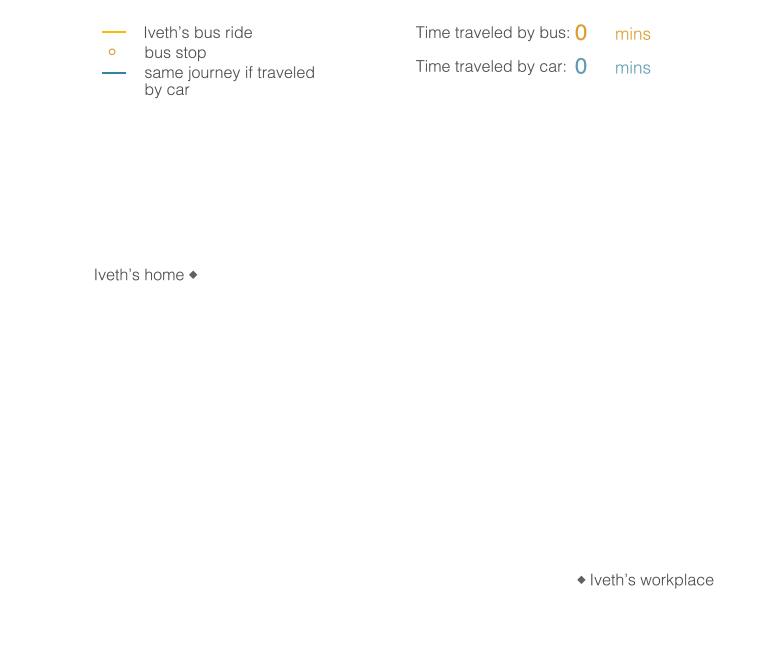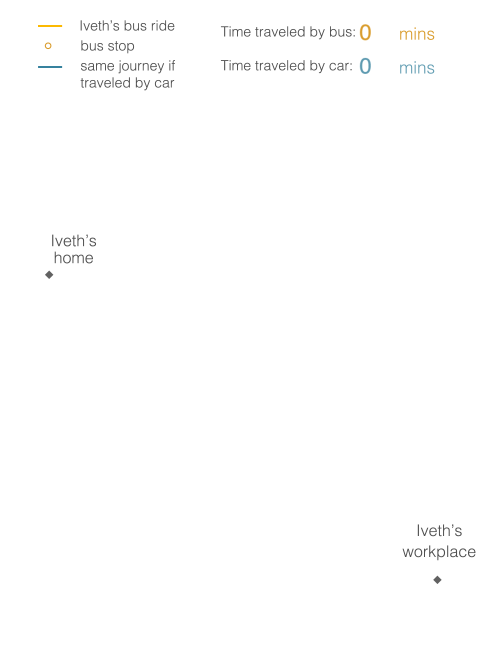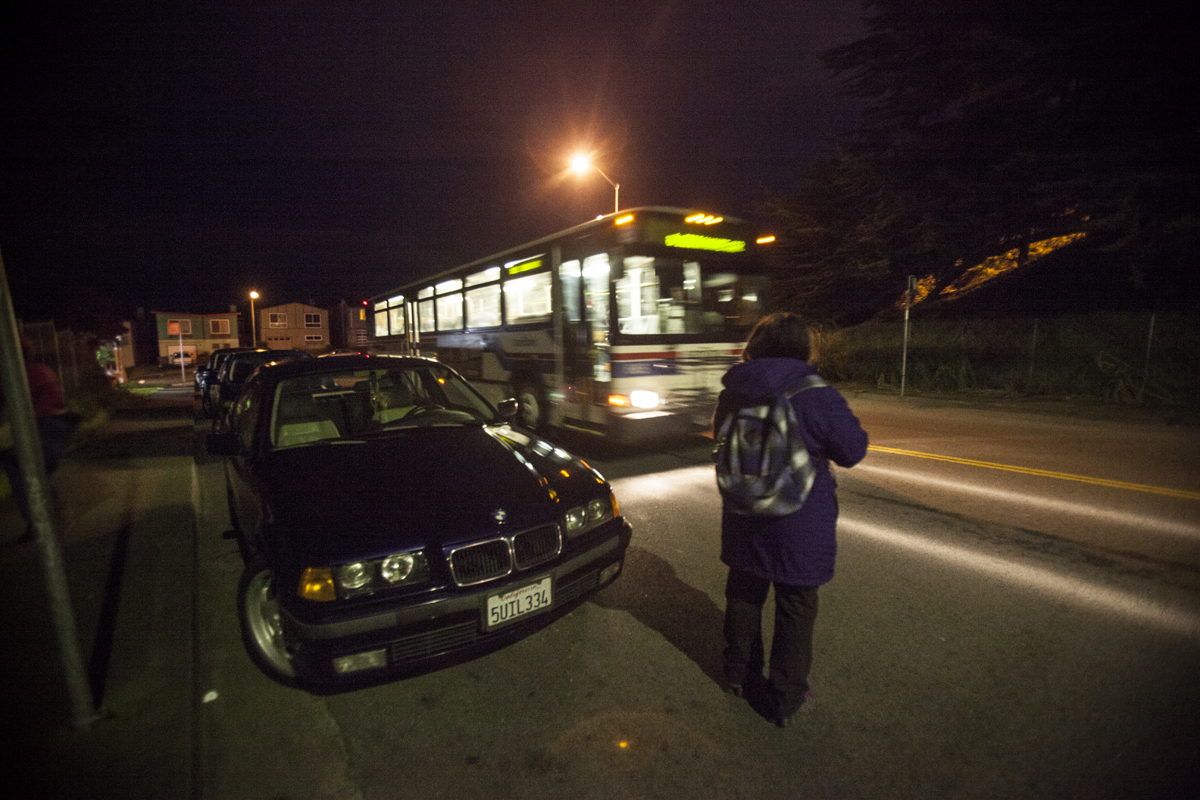
Transportation
Afour-hourdailycommute
Transportation is the second-largest expense for U.S. households. Car payments, gasoline and insurance make up the vast majority of this spending. But for many low-income families, the cost of a car is prohibitive. According to a 2004 report by the Public Policy Institute of California, only about two thirds of California households making less than 200 percent of the federal poverty level own vehicles, compared with 90 percent of their wealthier counterparts. Poorer residents are more likely to carpool, take public transportation or walk.
Having adequate means of transportation is a major factor in whether a worker can find jobs and access services like child or health care. In other words, having a car can improve people’s quality of life and increase their chances of moving up the income ladder. Not having one can eat into valuable time with family and place a physical burden on the working poor.
Iveth's Household
Household: Iveth, 48; her children Katy, 28, and Miguel, 19; and a granddaughter, Frida, 3 Location: Daly City, San Mateo County
| Budget and standards | Dollar amounts |
|---|---|
| Household income | $3,467 per month (with fluctuation) |
| Federal poverty level | $1,987 per month |
| Self-sufficiency standard | $7,709 per month |
| Iveth’s transportation budget | $80 per month |
| Self-sufficiency standard transportation budget | $330 per month |
Iveth, 48, wakes up each weekday morning at about 5:30 to commute to her job as a nanny. The mother of three, who asked that her last name not be used for privacy reasons, rushes out of the house at 5:50 a.m. to the bus stop a few blocks down the hill.
On a recent Thursday, Iveth felt tired as she made her way to the station. She had stayed up late the night before to watch a soccer match between the United States and Mexico, her home country.
“Going down is easy, going up is hard!” Iveth said, laughing, as she walked down the slope in her neighborhood. Her home in Daly City, California, sits on top of a steep hill in a row of pastel-colored suburban houses.
Iveth does not have a driver’s license, nor does she own a car. Her daily journey to work — or, as she calls it, her “routina” — takes roughly two hours each way. It involves transferring bus lines once, passing a total of 65 bus stops and walking a total of 20 minutes. By car, the same trip would take about 18 minutes.
When the bus arrived at 6 a.m., it was almost empty. A few men were dozing in the back seats. One woman sat down in the seat opposite Iveth’s and said hello.
“We see each other every day,” Iveth explained. She doesn’t know the woman’s name but says she enjoys the early morning companionship.
The landscape outside was pitch black, but the rising sun gradually cast it in pink and blue light. Iveth missed most of this transition. After switching to the second bus at around 6:15 a.m., she usually takes a long nap, her scarf draped over her lap and her hands folded.
For many low-wage workers like Iveth, having a car is prohibitively expensive. Her bus fare is minimal, just $4 per day, but it means a commute that is nearly six times as long as it would be by car. It's also a much greater distance.Below is an animated graphic of her journey. Travel with Iveth as she commutes by bus and on foot, and see how much shorter her commute would be by car.
| Unit | Car | Bus |
|---|---|---|
| Distance traveled | 12.1 miles | 17.2 miles |
| Time traveled | 18 minutes | 1 hour 43 minutes |
| Costs per month | $165 | $80 |



When Iveth arrived at her final stop in Burlingame, California, a city of roughly 30,000 people halfway between San Francisco and Palo Alto, she had a few minutes to kill. The bus runs infrequently, so it’s difficult to get the timing right. This gives her the chance to grab breakfast at a Peet’s coffee shop and collect herself before heading to work.
Iveth has two children in her care; she refers to them affectionately as “my loves.” “I like my job,” she said. “I learn from the children. I love that I have little teachers.”
She works an eight-hour day. After she finished, at about 6 p.m., she embarked on another two-hour journey.
When she arrived home, it was dark. Iveth retired to the small bedroom she shares with her 19-year-old son, Miguel. There’s barely enough room to stand. Black plastic bags, which she uses to store clothes and other items, were piled against one wall. A flat-screen television in the corner played telenovelas; Iveth loves the shows.
As an actress sang love songs in the background, Iveth played the video game Candy Crush on her tablet to unwind. Sitting on her full-size bed, draped in blankets, she looked both tired and happy.
Katy, her 28-year-old daughter, said Iveth works “crazy” hours. “I don’t know how she does it.”







